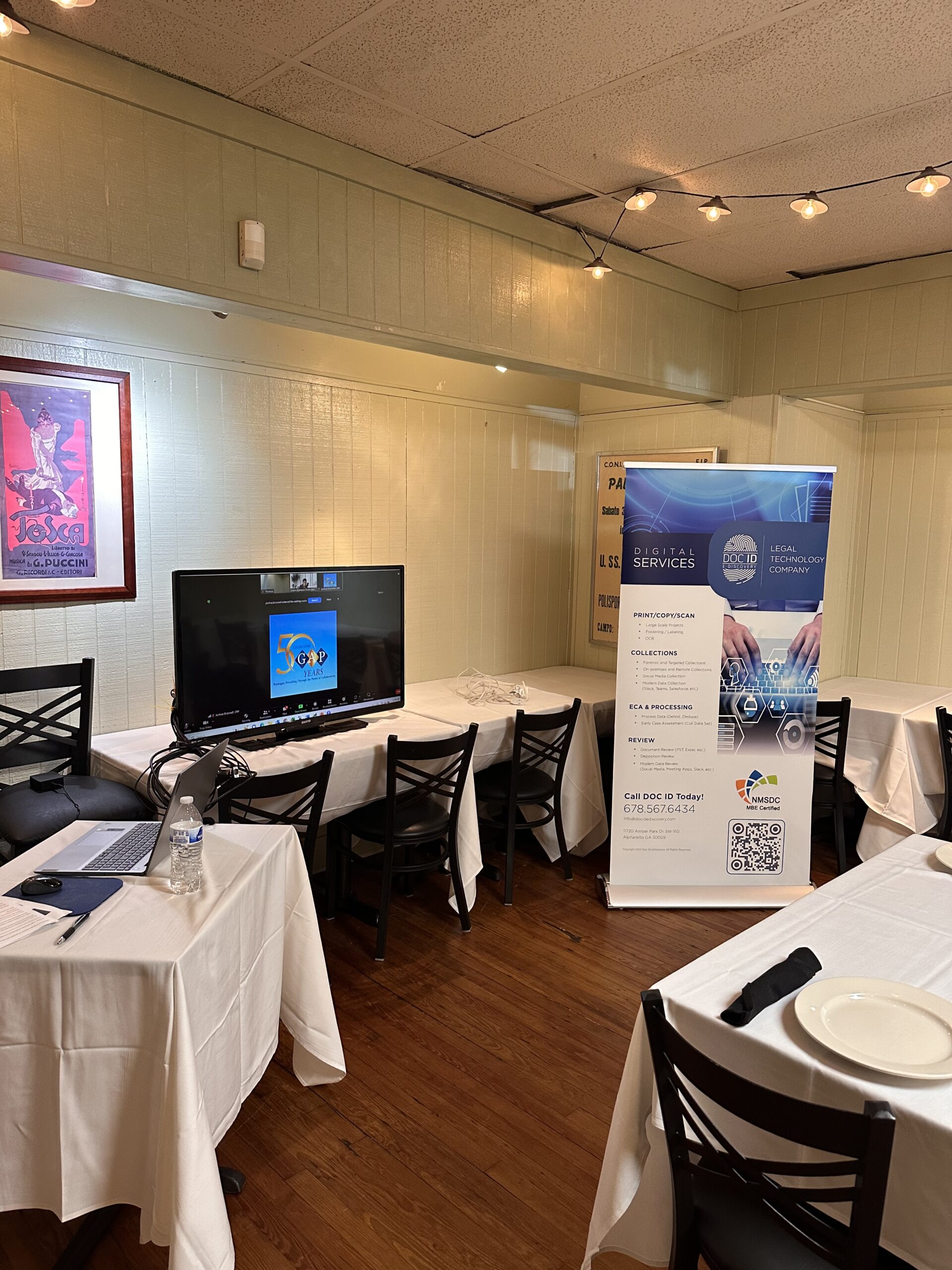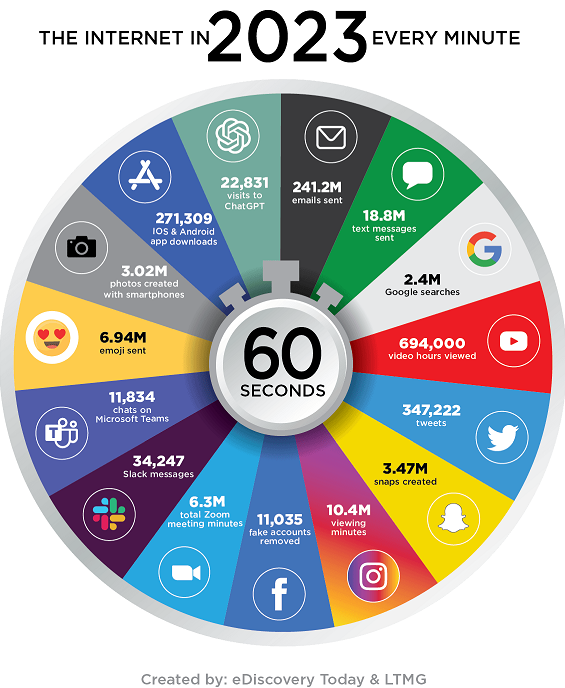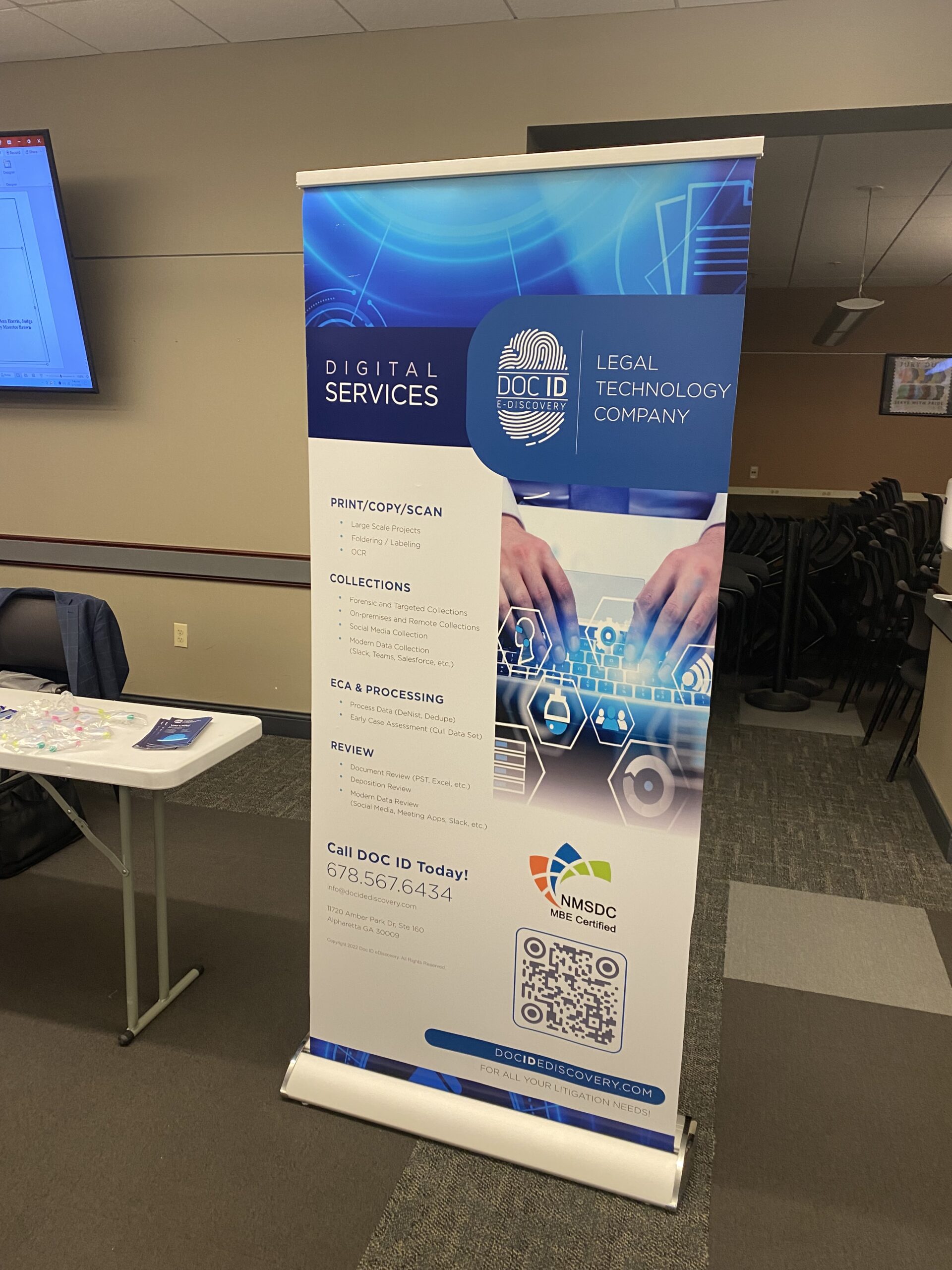Early Assessment of Potentially Relevant ESI
In many organizations, employees typically send and receive hundreds of emails (or more) each week, maintain electronic calendars, and store numerous electronic files on their hard drives and company shared drives and in cloud-based storage. Given the volume of data, employers should conduct a preliminary assessment and review of ESI to identify relevant data and possible parameters regarding the scope of discovery (for more information, see The Advantages of Early Data Assessment on Practical Law).
Specific criteria employers may consider in identifying and sorting ESI include:
– Key players.
– Applicable date ranges.
– Available file types.
– Potential search terms.
Employers and their counsel should complete the process of assessing ESI early in the case, usually before receiving any formal discovery demands from the plaintiff. This helps counsel to evaluate:
– The costs of discovery relative to the value of the claims in the case.
– Whether the employer must take any further steps to implement a litigation hold.
– The volume of potentially responsive data.
– The need for and selection of possible search terms or keywords.
– Whether there are potentially privileged documents or confidential information that warrant a protective order.
– Whether there are any special issues to raise at early discovery conferences.
– Which e-discovery platform or platforms are likely to best serve the needs of the case.
– How much time the employer needs to complete a comprehensive collection and review of ESI.
– Whether there is a preferable production format, such as:
– a native format production in original file format, for example .docx for Microsoft Word files
– an image production format, for example TIFF or PDF
While it is typically not necessary or feasible to collect and review a substantial number of documents at the beginning of a lawsuit, it may be prudent for counsel to collect and review the data sources that are likely to be most relevant to determining whether there are any helpful or problematic documents or records that strengthen or weaken the merits of the case.
An early assessment also helps the employer prepare for the Rule 26(f) conference. At this conference, the parties must be prepared to discuss a plan for, among other things:
– Preserving discoverable information, including ESI.
– Conducting proposed discovery.
Initial Meet and Confer
FRCP 26(f) requires counsel to meet at the outset of litigation to discuss the proposed discovery plan before the Rule 16 scheduling conference. The parties must confer as soon as practicable but generally (unless the case is on an expedited schedule) at least 21 days before either:
– The date of the scheduling conference.
– The due date for the scheduling order under FRCP 16(b). (FRCP 26(f)(1).)
At the Rule 26(f) conference, the attorneys of record are jointly responsible for attempting in good faith to agree to a proposed discovery plan. The discovery plan must address the parties’ views and proposals on any issues about disclosure or discovery of ESI, including the form in which it should be produced. (For more on the Rule 26(f) conference, see Rule 26(f) Conference in the July 2023 issue of Practical Law The Journal; for a model report and discovery plan that parties can use to memorialize the results of their Rule 26(f) meet and confer, with explanatory notes and drafting tips, see Rule 26(f) Report and Discovery Plan on Practical Law.)
A court’s Rule 16(b) scheduling order may also require disclosure or discovery of ESI and inclusion of any agreements reached by the parties for asserting privilege claims after they produce information.
To maximize the productivity of the Rule 26(f) conference, counsel should be well prepared and assess in advance the employer’s technology and potential discovery burdens. While employers sometimes hesitate to disclose detailed information about their ESI, it is often useful to exchange information about the existence and accessibility of ESI with an employee’s counsel during the meet and confer process, including information about:
– Potential custodians.
– Relevant date ranges.
– Search terms and methodology, including a party’s desire to use predictive coding to conduct searches (for more
information, see Long Live Predictive Coding on Practical Law).
– The production format. The employer should confer with the plaintiff’s counsel about the preferred forms of
production. E-discovery-savvy plaintiff’s counsel likely have a preference, which may or may not be consistent
with how the employer plans to produce discovery. Whether or not the plaintiff’s counsel is experienced with the
nuances of e-discovery, raising the issue early with them may prevent later complaints that they received e-
discovery in an unacceptable format. (For more on e-discovery collection negotiations, see Collecting Documents
and Electronically Stored Information in Federal Civil Litigation on Practical Law.)
– The timing of production and whether it should be on a rolling basis, all at once, or in phases.
– The need for a protective order.
– Any issues related to the burdensome production of ESI, including the potential for cost-shifting.
Additionally, if an employer wants to limit the scope of a litigation hold or searches for relevant documents, it should strongly consider conferring with the plaintiff’s counsel to reach an agreement that its desired limitations are reasonable given the known facts. Counsel for the employer and the plaintiff routinely discuss these issues as part of the Rule 26(f) conference. For example, counsel may agree that the preservation duty will not apply to all aspects of a company’s business and agree to reasonably limit the scope of the litigation hold and search for responsive ESI to custodians within the employee’s:
– Reporting line.
– Business unit.
– Division or department.
– Physical workplace.
The parties can always agree to modify the scope of the litigation hold or search for additional documents if they discover facts warranting expansion.
Spoliation Sanctions
Sanctions in employment cases for failure to preserve relevant evidence, including ESI, can result in serious penalties. FRCP 37(e) permits sanctions against a party for the failure to preserve ESI where a court finds each of the following:
– The party did not take reasonable steps to preserve ESI that it should have preserved in anticipation or because
of litigation.
– The information is lost.
– The information cannot be restored or replaced by additional discovery.
– Either:
– the loss of information prejudices another party (FRCP 37(e)(1)); or
– the spoliating party intentionally deprived another party from using the information in the litigation (FRCP
37(e)(2)).
FRCP 37(e) requires a two-step analysis of:
– Whether spoliation occurred.
– What, if any, sanction is appropriate, depending on whether the spoliation:
– is prejudicial; or
– was intentional (Goldrich v. City of Jersey City, 2018 WL 4492931, at *7, *11 (D.N.J. July 25, 2018)).
The rule provides for different levels of sanctions depending on the spoliator’s intent. If a court finds that the loss of ESI prejudices another party, it may order sanctions “no greater than necessary to cure the prejudice” (FRCP 37(e)(1)). If, however, the party responsible for losing or destroying ESI acted with the intent of preventing another party from using the ESI in litigation, a court may impose more severe sanctions, such as:
– Presuming that the lost information was unfavorable to the spoliator.
– Instructing the jury that it may or must presume the lost information was unfavorable to the spoliator.
– Dismissing the action or entering a default judgment. (FRCP 37(e)(2); 2015 Advisory Committee’s Notes to FRCP
37(e)(1) and (2)).
A court may not impose spoliation sanctions if the employer has taken reasonable steps to preserve ESI. The routine, good-faith operation of an electronic information system is a relevant factor in evaluating whether an employer took reasonable steps. Courts also consider proportionality when determining whether an employer’s efforts were reasonable. (2015 Advisory Committee’s Notes to FRCP 37(e).)
In post-2015 FRCP amendment decisions, the courts apply a higher bar on imposing the more severe sanctions under FRCP 37(e)(2) and require a showing of intentional spoliation (see, for example, OrchestrateHR, Inc. v. Trombetta, 178 F. Supp. 3d 476, 489-90, 493 (N.D. Tex. 2016); Accurso v. Infra-Red Servs., Inc., 169 F. Supp. 3d 612, 618 (E.D. Pa. 2016); Nuvasive, Inc. v. Madsen Med., Inc., 2016 WL 305096, at *2-3 (S.D. Cal. Jan. 26, 2016); Cruz, 2019 WL 4805765, at *14-15 (holding that where the defendant did not act with culpable intent, spoliation sanctions were available only if the plaintiff was prejudiced by the loss)). For example:
– One court refused to impose the sanction of dismissal, explaining that under the amended rules, it may impose
sanctions “no greater than necessary” under FRCP 37(e)(1) to cure any prejudice resulting from the destruction of
evidence (Ericksen v. Kaplan Higher Educ., LLC, 2016 WL 695789, at *1 (D. Md. Feb. 22, 2016)).
– Another court refused to impose spoliation sanctions under FRCP 37(e) because the destruction of ESI did not
prejudice the plaintiff (Snider v. Danfoss, LLC, 2017 WL 2973464, at *1 (N.D. Ill. July 12, 2017) (noting “[n]o
harm; no foul” in finding that sanctions were not warranted where the ESI was not relevant and its destruction
did not prejudice the plaintiff)).
However, if a party engages in intentional spoliation of ESI, a court does not need to find prejudice to issue case-terminating sanctions (OmniGen Rsch. v. Wang, 321 F.R.D. 367, 371-72 (D. Or. 2017)).
Counsel should understand that FRCP 37(e) only governs sanctions for the spoliation of ESI. Courts may order appropriate sanctions for the loss or destruction of physical evidence under their inherent authority to sanction parties for bad faith, vexatious, wanton, or oppressive conduct (for more on a court’s inherent authority to issue sanctions, see Sanctions in Civil Litigation (Federal) on Practical Law).
Some jurisdictions also recognize a stand-alone tort claim for negligent or intentional spoliation of evidence (see, for example, Mace v. Ford Motor Co., 653 S.E.2d 660, 664 (W. Va. 2007) (negligent); Hazen v. Municipality of Anchorage, 718 P.2d 456, 463 (Alaska 1986) (intentional); Velasco v. Com. Bldg. Maint. Co., 169 Cal. App. 3d 874, 877-78 (1985) (negligent); Callahan v. Stanley Works, 306 N.J. Super. 488, 497-98 (1997) (negligent)). FRCP 37 does not preempt or otherwise affect the validity of these state law claims.
BYOD Workplaces and E-Discovery
In a workplace with a BYOD program, employees are permitted to use their own laptops or mobile devices for both work and personal use. Workplace BYOD programs complicate an employer’s e-discovery process, and the increase in remote work since the COVID-19 pandemic has made the process even more challenging (for more on working with remote employees, see Remote Employees: Best Practices in the July 2023 issue of Practical Law The Journal).
Employers must remember to include all relevant custodians and their BYOD devices when implementing a litigation hold and collecting relevant documents or else risk potential sanctions. For example, in Small v. University Medical Center, the court imposed sanctions on the defendant for numerous e-discovery violations, including the failure to issue any litigation hold addressing BYOD devices despite the fact that several key employees confirmed that they used their personal mobile devices for work-related purposes (2018 WL 3795238, at *63 (D. Nev. Aug. 9, 2018)).
An employer’s obligations are more limited when employees do not use their personal devices for work-related purposes. For example, some courts have held that text messages on the plaintiff’s co-employees’ personal cell phones were not within the employer’s possession, custody, or control because the plaintiff did not contend that:
– The employer issued the cell phones to the employees.
– The employees used the cell phones for any work-related purpose.
– The employer otherwise had a right to obtain the employees’ text messages on demand. (Cotton v. Costco Wholesale
Corp., 2013 WL 3819974, at *6 (D. Kan. July 24, 2013).)
Courts have required some evidence that the devices contain relevant information, especially before ordering production of a plaintiff’s personal cell phone or other mobile device (Ewald v. Royal Norwegian Embassy, 2013 WL 6094600, at *10 (D. Minn. Nov. 20, 2013)).
Employers that require, request, or are aware that their employees use their personal mobile devices for work-related purposes likely have an obligation to preserve relevant evidence on those devices. A comprehensive written BYOD policy setting out the requirements and obligations for BYOD programs can assist employers in implementing a litigation hold and collecting documents from mixed-use devices. (For a model BYOD policy, with explanatory notes and drafting tips, see Bring Your Own Device to Work (BYOD) Policy on Practical Law.)
Ephemeral Messaging
Employers are using mobile messaging apps for workplace communications with increasing frequency. Ephemeral messaging apps present both benefits and challenges for employers faced with discovery obligations and demands.
Ephemeral messaging apps allow users to exchange content and automatically discard that content from all devices (that is, from both the sender’s device and the recipient’s device) within a period of time after a message is sent. As a result, ephemeral messaging may increase efficiency in the discovery process by reducing the number of messages maintained on employee devices and decreasing the amount of information that must be imaged or otherwise collected. This can potentially expedite the preservation and collection process and reduce discovery costs.
However, the automatic deletion features of these apps create a risk of destroying relevant evidence after an employer’s preservation obligation arises. Although some ephemeral messaging apps allow users to modify their settings and keep relevant messages, thereby satisfying the duty to preserve, many do not. Employers should be aware of the availability and use of these features when adopting an ephemeral messaging app for employee communications.
Contributors
Jyotin Hamid
Partner at Debevoise & Plimpton LLP
Tricia Bozyk Sherno
Counsel at Debevoise & Plimpton LLP









Leave A Comment